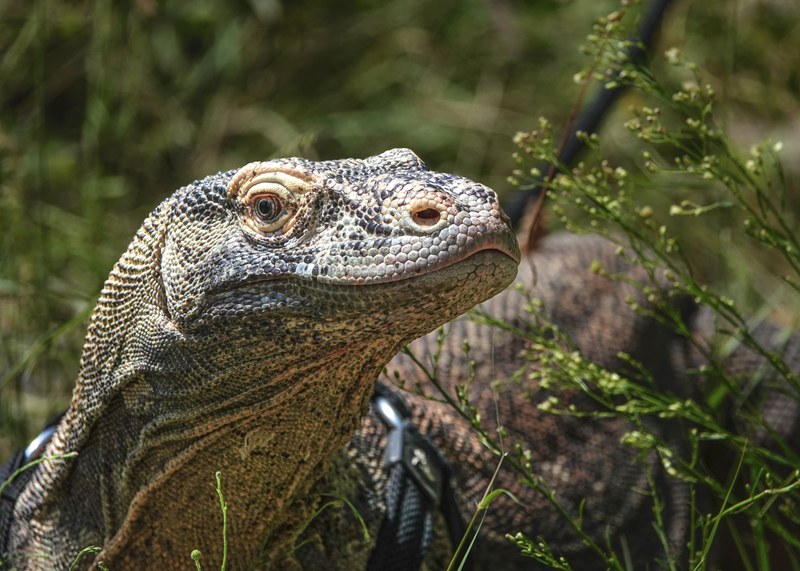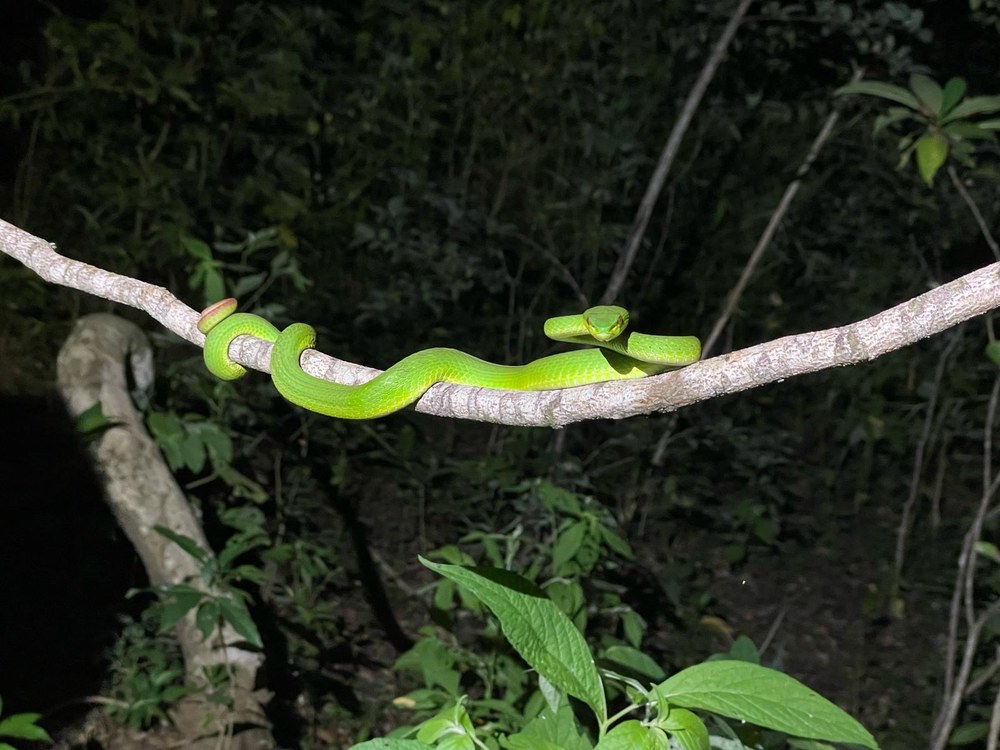
ABQ BioPark Contributes to Komodo Dragon Conservation Work in Indonesia
Komodo dragons, renowned as Indonesian icons and the world’s largest lizards, were listed as endangered in 2021.
In April, ABQ BioPark herpetology keeper Phil Mayhew had the opportunity to travel to Komodo Island in Indonesia to help conduct field work with the Komodo Survival Program (KSP).
“It was amazing, and definitely the farthest I've ever traveled from home,” Mayhew said. “To me, that place could be one of the wonders of the world, because nowhere else on the planet are those animals found or anything similar.”
KSP, a nonprofit, is the sole organization for essentially all population data and scientific monitoring of Komodo dragons, which are Indonesian icons and the world’s largest lizards.
Each year, KSP accepts a few individuals from Association of Zoos and Aquariums certified institutions to join in their field work. After being on a waitlist since 2019, Mayhew was thrilled to be among the three selected in 2025.
“It was myself and a keeper from a zoo in New Jersey, and a keeper from Australia, and we got to join them for about a week,” said Mayhew. “It felt like I was sailing into Jurassic Park. Right off the boat, we saw a giant dragon. They were everywhere on the island.”
While there, Mayhew helped monitor and track the dragon population throughout Komodo Island National Park which encompasses five islands, with Komodo Island being the largest. KSP also monitors a small subset outside the national park.
Mayhew explained this work is important because Komodo dragons were reassessed as endangered by the International Union for Conservation of Nature (IUCN) in 2021.

“They are only found in this small subset of islands within Indonesia, and it’s a very populated part of the world,” Mayhew continued. “They’re an incredible species, so really anything we can do to protect them and make sure their home is going to be untouched is important.”
The field work entailed observing dragons through motion-sensitive cameras or by safely trapping them. Those caught would then be measured and released.
“When I was there, we caught a total of 32 dragons, ranging from the smallest we caught being a 100-gram hatchling that was maybe a month old, to a 224-pound over nine-foot long male,” said Mayhew.
If a new, unrecorded Komodo dragon was caught, they would be microchipped so they could then be identified in the future. A parasitologist also accompanied the team to collect ticks off of the dragons and study parasites within the Komodo dragon population.
Mayhew said he was impressed by the team and the amount they were able to accomplish each day.
“There was a team of about 15 of us. We worked closely with not only the KSP staff, but with the national park rangers as well as the villagers,” he said. “We were checking about 10 traps every single day, twice a day. It was very hot and very humid. In the seven days I was there, I think we hiked a total of about 73 miles, about 10 miles a day.”
KSP also does a lot of public outreach and education, said Mayhew, which is crucial because when animals are competing potentially for the same resources as humans, they often become demonized.
“That education is incredibly important to be able to make sure that the local population is on board with conservation, because they are the ones that live with these animals,” he said.
Beyond their sheer size, Mayhew said what he finds most fascinating about Komodo dragons is their intelligence.
“It was just amazing seeing them in the wild, because I work with one every day,” said Mayhew. “Our dragon here is named Indah, meaning ‘beautiful’ in Indonesian, and she is a very smart animal. She picks up on training cues easily and is very adaptable. She is voluntarily crate-trained for blood draws and is voluntarily harness-trained, as she enjoys going on walks in front of the public.”
While the humid climate was a challenge to get used to, Mayhew found it to be a rewarding experience with many takeaways.
“It was a once in a lifetime experience to be able to work with the KSP, and really experience the Indonesian culture and their people,” said Mayhew. “I also got an in-depth look at the Komodo dragon environment and how it differs from island-to-island, what their diet and behavior is like in the wild, what their growth rates are like, and how we can further encourage natural behaviors here.”
Mayhew found KSP also has data on some of the native Indonesian snakes such as the timor python and the white-lipped viper—two species also cared for at the BioPark Zoo.
“That not only gave me an insight into the Komodo dragon habitat, but also for some of the other species that we have here,” he said.

A white-lipped viper is pictured at night on a tree in Indonesia. Photo courtesy of Phil Mayhew.
This crucial conservation work was funded through the New Mexico BioPark Society’s conservation fund, which has been providing funds for conservation initiatives since 1987. Annually, thousands of dollars are contributed by NMBPS to local and global efforts to protect endangered animals—both at the ABQ BioPark and in the wild— to ensure that species listed as critically endangered or threatened today are still with us tomorrow.
Become a member and help support the ABQ BioPark in its local and global conservation work.
To learn more about KSP and their work, visit their website.
Also, make sure to keep an eye out for Indah during her weekly Komodo Walks between the Reptile House and Penguin Chill exhibit. These fun, informative strolls feature a presentation about the species from animal care staff and usually take place on Fridays at 11am, should staffing and weather permit.
